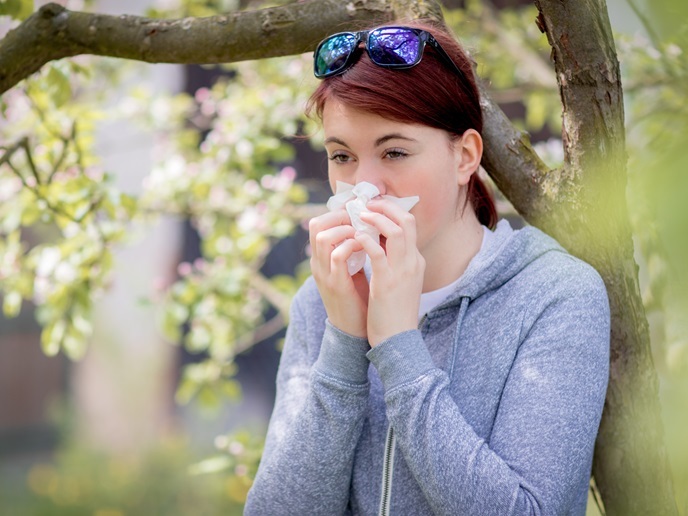Analysing evolving pollen exposure with AI
Pollen allergies (hay fever) are immune system reactions to airborne pollen grains released by trees, grasses and weeds, with common symptoms including sneezing, nasal congestion and watery, itchy eyes. A recent analysis found that pollen allergies affect a median of 18.1 % of the global population, though estimates range widely between 1 % and 63 %(opens in new window) for different countries. Treatment typically involves medication such as antihistamine tablets, nose sprays and eye drops, alongside minimising exposure by staying indoors. “We could also design public health interventions, like planting fewer allergenic trees in urban spaces, and combating climate change will help tackle invasive allergenic species like ragweed,” says EPOCHAL project coordinator Marloes Eeftens(opens in new window) from the Swiss Tropical and Public Health Institute(opens in new window). “But to monitor the success of these efforts, we first need to know more about changing pollen levels, and their health impacts.”
AI-enabled pollen modelling
To assess how climate change has impacted pollen levels, EPOCHAL, funded by the European Research Council(opens in new window), used artificial intelligence (AI) to analyse data from Switzerland’s 14 pollen measurement stations, considering 12 of the most allergenic species over 31 years. “We found that for many allergenic plants in Switzerland, the pollen season starts earlier in the year, lasts longer and is more intense than before,” notes Eeftens. To explore exposure to pollen over time, EPOCHAL used AI to reconstruct daily pollen levels and distribution patterns(opens in new window) for five types of pollen in Switzerland – Alder, Ash, Birch, Grass and Hazel – going back to 2002.
Modelling spatial and temporal variations
Machine learning tools were used to model spatial and temporal variations in pollen concentration, using pollen levels recorded by the measurement stations combined with predictor variables affecting emission, dispersion and sedimentation (e.g. altitude, land use, species distribution, temperature and vegetation). To find the best performing machine learning method, six algorithms were compared(opens in new window). A learning method called Random Forest(opens in new window) was found to be the best performing option. “While we had known pollen levels at the measurement stations, exposure levels elsewhere previously had to be assumed. Our model was able to indicate the pollen types that homes throughout Switzerland were exposed to on specific days and in what concentrations over a 20-year period,” adds Eeftens.
Effects of pollen on populations and individuals
EPOCHAL’s dataset of historic pollen levels across Switzerland offered a means to compare exposure to health data, to study the effects on populations and individuals. Some 410 volunteers were followed throughout the pollen season. The pollen they were exposed to was determined by EPOCHAL’s models and their pollen sensitisation measured by skin prick tests, while symptom severity was self-reported. Other health indicators including cognitive function, lung function, blood pressure and sleep quality during the pollen season were also measured. “We found that there is no threshold below which symptoms can be completely avoided. Once exposure is above 50-80 pollen per cubic metre, suffering is typically moderate to severe, regardless of exact levels,” explains Eeftens. Analyses have already revealed for the first time, an association between pollen concentration and blood pressure(opens in new window), measured longitudinally. Whereas, no significant relationship was found between pollen and cognitive performance(opens in new window). “This is all important information for pollen warning systems to communicate what people with allergies can expect,” adds Eeftens.







